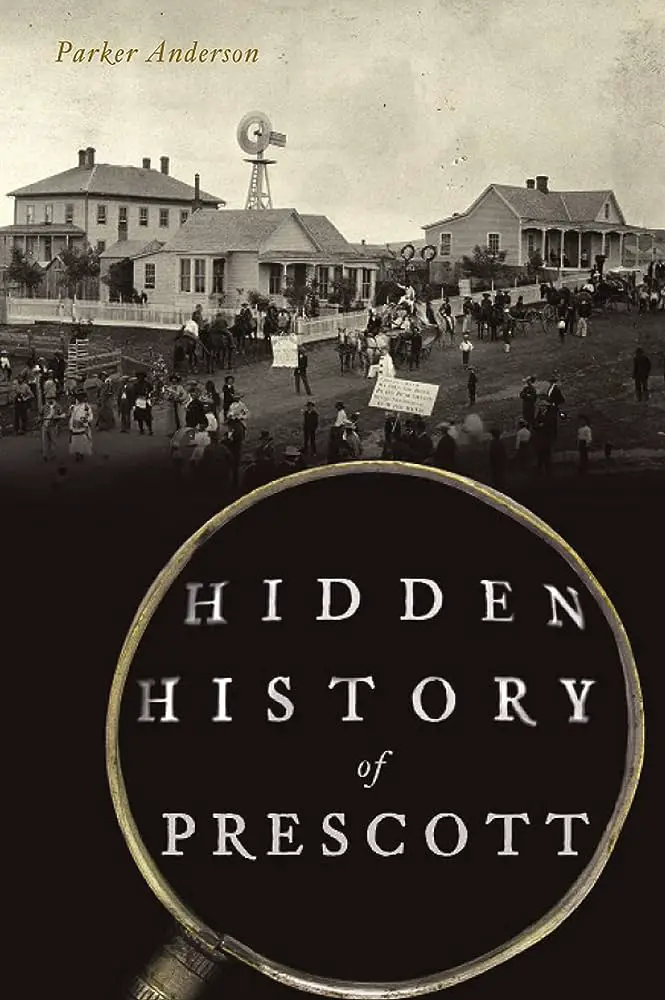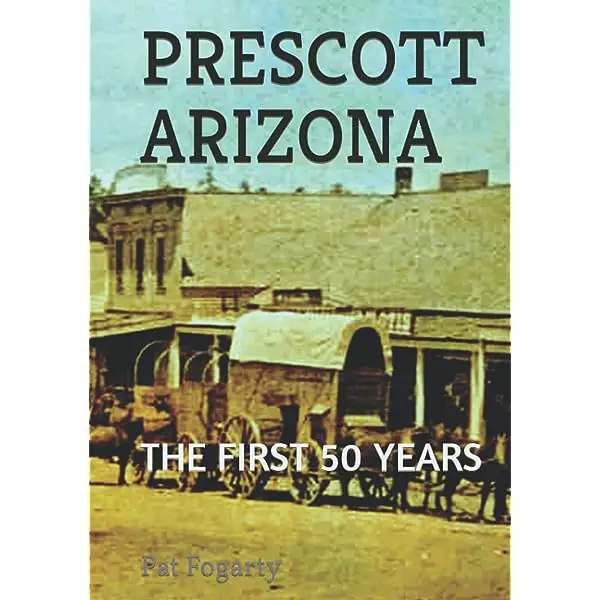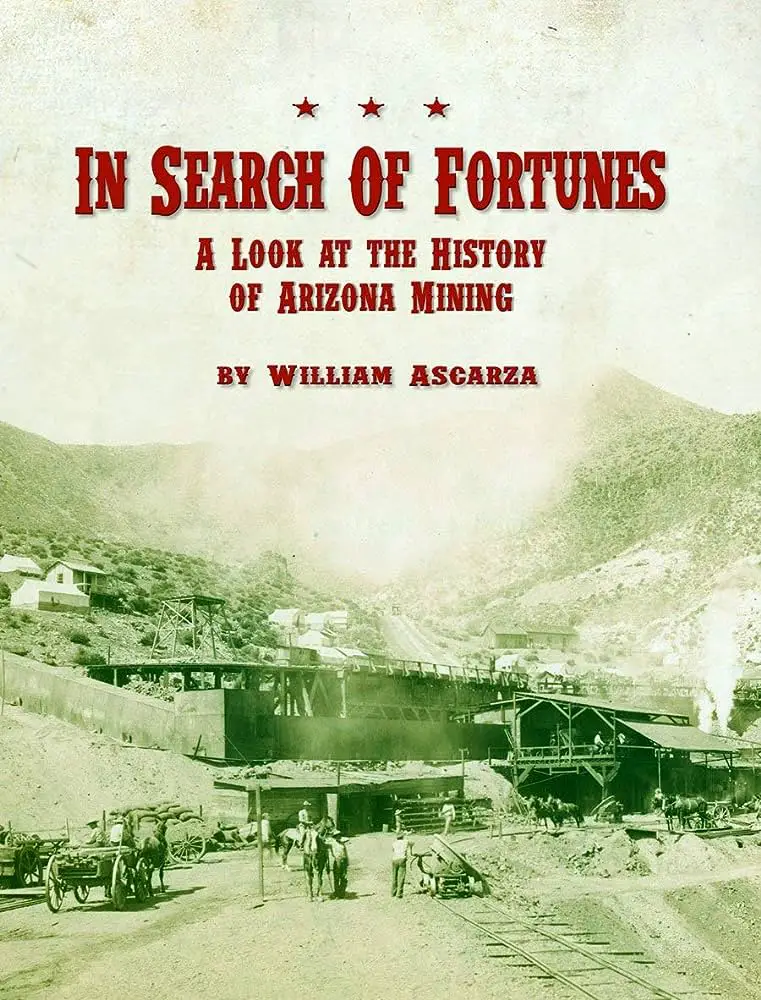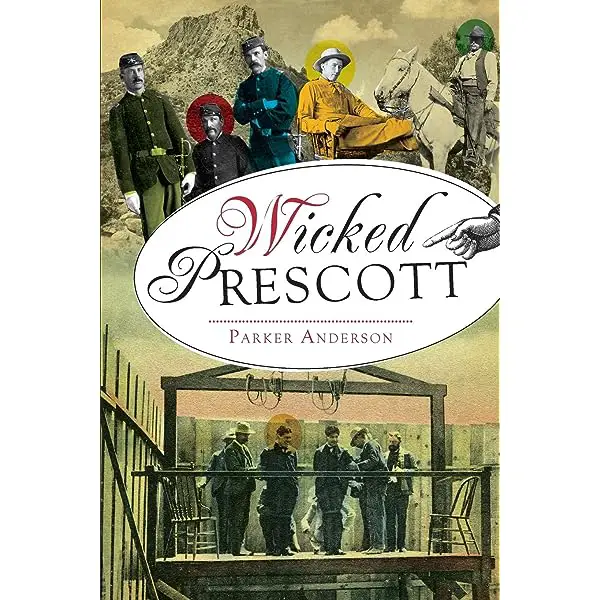Prescott’s mining history is an enthralling tale filled with triumphs, trials, and timeless stories. The allure of gold and other precious minerals shaped Prescott into a bustling hub, igniting an era of exploration and growth.
The best books to read about Prescott’s mining history help us unearth these incredible stories, offering insights into the characters and events that have molded this rich legacy.

Prescott’s mining history is not merely a tale of treasure hunting; it’s a multifaceted story of human determination, technological progress, economic development, and social transformation. The richness of this history is captured vividly in literature. From firsthand accounts to scholarly analyses, the best books to read about Prescott’s mining history offer readers a comprehensive view of an era that continues to shape the region.
The Dawn of Mining in Prescott
The dawn of mining in Prescott marks the beginning of a rich and multifaceted chapter in the region’s history. Rooted in the early exploration of precious metals, the first mining activities laid the foundation for a burgeoning industry that would shape the economic, social, and cultural landscape of Prescott.
Miners, entrepreneurs, and settlers were drawn to the potential wealth hidden beneath the earth, sparking a complex interplay of human endeavor, technological innovation, and natural resources.
This formative period is not just about the extraction of minerals; it’s a story of ambition, collaboration, challenges, and triumphs that set the stage for the various facets of mining history that would unfold.
The dawn of mining is the starting point, the genesis of a narrative that continues to resonate and influence Prescott’s identity and growth.
Introduction to Prescott’s Mining History
The discovery of gold and other precious minerals in Prescott during the early 19th century marked the birth of a mining era. People from diverse backgrounds were drawn to the region, inspired by the promise of wealth and adventure.
According to the Sharlot Hall Museum, these early mining activities were characterized by perseverance and primitive techniques. The museum’s exhibits provide an immersive experience into this vital period of Prescott’s history.
The Importance of Mining in Prescott’s Development
Mining in Prescott is not just a historical event but a cornerstone that shaped the area’s economy and society. From the establishment of towns to the formation of communities, the mining industry’s impact is profound and lasting.
Books like “Frontier Mining Towns” by John A. White delve into the challenges and growth during this period, capturing the essence of a community forged by dreams and determination. The Prescott Historical Society also offers tours and resources that showcase mining’s significance in the region.
Discovery of Minerals
The era of Prescott’s mining dawned with the discovery of gold near Lynx Creek in 1863. This event brought a wave of miners and entrepreneurs to the area, marking the beginning of an industry that would shape the region for generations to come.
For a detailed account of these discoveries and their implications, books like “Gold Placers and Placering in Arizona” by Eldred D. Wilson are invaluable resources. Additional information can also be found in the Mineralogical Record.
Early Mining Techniques
The early mining techniques employed in Prescott were a testament to human ingenuity and resilience. Using simple tools and manual labor, miners were able to extract valuable resources from the earth.
Literature like “A Guide to the Mining History of Arizona” by William H. Chenoweth provides insights into these early methods. Additionally, visitors can explore historical mining sites through guided tours offered by the Prescott National Forest, witnessing firsthand the techniques that laid the groundwork for modern mining practices.
Pioneering Texts on Prescott’s Mining History
The pioneering texts on Prescott’s mining history form the bedrock of our understanding of this complex and multifaceted subject. These early works, penned by geologists, historians, miners, and other experts, provide valuable insights into the techniques, challenges, and socio-economic implications of mining during the formative years.
From firsthand accounts of the hardships faced by early miners to analytical studies of mineral deposits and mining laws, these texts paint a vivid picture of an era marked by exploration, innovation, and determination.
They serve as essential references for scholars, enthusiasts, and anyone keen to delve into the roots of Prescott’s mining legacy. The pioneering texts are not just historical documents; they are living connections to the past, bridging generations and enriching our contemporary understanding of a defining aspect of Prescott’s heritage.
Books from the Early 19th Century
The early 19th century was a time of exploration and excitement in Prescott’s mining history. The literature from this era offers valuable insights into the lives of miners, the techniques employed, and the community that evolved around the mines.

“Gold and Silver in the West” by T.V. Olsen is a notable work from this time, chronicling the mining activities and their societal impact. Another invaluable resource is “Mining Camps of the Early American West” by V. West, which paints a vivid picture of the mining lifestyle and culture.
First-Person Accounts and Journals
First-person accounts and journals provide an intimate glimpse into the daily lives and personal experiences of those involved in Prescott’s early mining activities. They capture the emotions, struggles, and triumphs of the people who shaped the industry.
The Library of Congress hosts a collection of personal journals and letters from miners and settlers during this period. Works like “Letters from the Mines” by George M. Miller offer readers a chance to connect directly with the experiences of those who lived and toiled during these exciting times.
The Gold Rush Era
The Gold Rush Era represents one of the most exciting and transformative periods in Prescott’s mining history. Sparked by the discovery of gold in the mid-19th century, this era saw an influx of prospectors, entrepreneurs, and adventurers, all drawn by the allure of sudden wealth.
Towns sprung up, fortunes were made and lost, and the social fabric of the region was forever altered. The feverish pursuit of gold also led to technological innovations, legal frameworks, and economic systems that had lasting impacts.
The Gold Rush was more than a historical event; it became a symbol of ambition, opportunity, and the American dream. Books and narratives focusing on this era capture the drama, the personalities, and the societal changes that make the Gold Rush an enduring and fascinating chapter in Prescott’s mining story.
Gold Discovery and Its Impact
The discovery of gold in Prescott sparked a rush that brought an influx of miners, entrepreneurs, and settlers. The impact of this Gold Rush era reached beyond mere economics, shaping the social and cultural aspects of the region.
For a comprehensive exploration of this Gold Rush period, “The Gold Rush: A Primary Source History of the Search for Gold in California” by Mark V. Clemens is highly recommended. The Arizona Historical Society also hosts exhibits that showcase the lasting impact of gold discovery on Prescott and the entire state.
Essential Reads on the Gold Rush
The Gold Rush is a captivating era, and several books offer intriguing accounts of this exciting period. “Days of Gold: The California Gold Rush and the American Nation” by Malcolm J. Rohrbough is a must-read for anyone interested in the California Gold Rush’s influence on Prescott’s mining history.
“Gold Diggers: Striking It Rich in the Klondike” by Charlotte Gray also provides a broader perspective on the Gold Rush phenomenon and its connection to Prescott. These reads, along with various historical records available at the Arizona State Library, make for a comprehensive understanding of this golden era.
Technological Evolution in Mining
The technological evolution in Prescott’s mining history is a captivating journey that reflects human ingenuity and adaptation. From rudimentary tools and methods used in the early days to the advanced machinery and computer-aided processes of modern times, technology has continuously shaped the way mining is conducted.
Innovations in drilling, extraction, safety, and environmental management have not only increased efficiency but also reduced risks and environmental impacts. This constant push for technological advancement has also mirrored the broader scientific and industrial progress of society.
Books chronicling this technological evolution provide insights into both the specific tools and broader trends that have made mining a dynamic and ever-changing field. The story of technological growth in mining is indeed a microcosm of Prescott’s transition into a modern, forward-thinking community.
Books on Innovations and Inventions
The mining industry in Prescott underwent significant technological changes over the years. The transition from manual labor to machinery played a vital role in shaping modern mining practices.
“Mining Innovations: An Anthology of Historical Records” by Daniel H. Jennings and “The History of Mining: The Events, Technology and People Involved” by Michael Coulson are crucial texts that chronicle these technological advancements. The National Mining Hall of Fame and Museum also offers insights into the inventions that revolutionized the mining industry.

Impact of Technology on Mining Practices
Technology not only improved efficiency but also had far-reaching impacts on safety, environmental considerations, and economic factors in mining. Understanding this transformation is essential to appreciate Prescott’s mining legacy.
“Technology and the Evolution of Mining” by Robert H. Peters provides an in-depth look at how technology reshaped mining practices in Prescott and beyond. Along with the Smithsonian’s National Museum of American History‘s collections on mining technology, these resources provide a well-rounded view of technology’s role in shaping the mining industry.
Legal and Economic Aspects of Mining
The legal and economic facets of mining in Prescott are interwoven threads that have shaped the mining landscape in complex ways. On the legal front, regulations, land rights, labor laws, and environmental protections have evolved to guide and govern mining practices, reflecting societal values and balancing diverse interests.
Economically, mining has been a driving force in Prescott’s growth and development, contributing to job creation, infrastructure, and local commerce. The intertwining of legal structures with economic imperatives has led to a nuanced field where law, business, and social considerations meet.
From court cases to economic analyses, the study of legal and economic aspects provides a multifaceted understanding of how mining was not merely an industrial activity but a socio-legal-economic phenomenon that continues to influence Prescott’s identity and future.
Legal Framework Governing Mining in Prescott
The legal landscape governing mining in Prescott has evolved over time to address various complexities and challenges. Understanding this legal framework is essential for a comprehensive view of Prescott’s mining history.
“Minerals, Lands, and Geology for the Common Defence and General Welfare: A History of Public Lands, Federal Science and Mapping Policy, and Development of Mineral Resources in the United States” by Mary C. Rabbitt provides insights into the legalities of mining. Also, the U.S. Bureau of Land Management website offers information on federal mining laws applicable to Prescott.
Economic Impact of Mining in Prescott
Mining has been an economic cornerstone for Prescott, driving growth and shaping various other sectors. Several books and studies explore the economic dynamics and the role of mining in regional development.
“Economic Growth and Development in the American West” by Gary M. Walton is a key work in understanding the macroeconomic impact of mining. For contemporary economic analyses, the University of Arizona’s Economic and Business Research Center provides valuable data and insights.
Environmental Considerations and Conservation Efforts
The environmental considerations associated with mining in Prescott have grown increasingly significant over time, reflecting a broader understanding of the Earth’s fragility and the need for sustainable practices. The extraction of minerals, while economically vital, brought with it challenges such as soil erosion, water contamination, and habitat disruption.
Recognizing these impacts, various conservation efforts have been put in place, both regulatory and community-driven. These initiatives aim to balance the demands of mining with the imperative to protect and preserve the natural environment.
Education, reclamation projects, careful planning, and collaboration between industries and environmental organizations are all part of the concerted efforts to make mining more responsible.
In books and studies focusing on environmental aspects, one can trace the evolution of thought and practice that has made conservation an integral part of Prescott’s mining landscape.
Environmental Impact of Mining
Mining, though beneficial economically, has had undeniable environmental impacts. From land degradation to water pollution, the ecological implications are a critical aspect of Prescott’s mining history.
“Ecology and Coal Resource Development” edited by M. K. Wali is a detailed account of the environmental challenges posed by mining. The U.S. Environmental Protection Agency also offers resources on regulations and policies aimed at minimizing mining’s environmental footprint.
Conservation Efforts and Sustainable Mining
In response to the environmental challenges, numerous conservation efforts and sustainable practices have been adopted in Prescott’s mining industry. These efforts symbolize a commitment to balance economic growth with ecological responsibility.
“Modern Approaches to Sustainable Mining” by James S. Redpath explores the techniques and practices adopted for eco-friendly mining. The World Wildlife Fund’s mining program also offers insights into global initiatives aimed at making mining sustainable and responsible.
Mining in Contemporary Literature and Culture
Mining in Prescott has transcended its economic and industrial boundaries to become a significant motif in contemporary literature and culture. The allure of precious metals, the rugged landscapes, the drama of human endeavor, and the socio-economic impacts have all found expression in novels, films, music, and art.
From historical accounts to fictional narratives, the mining experience has been portrayed with complexity and nuance, capturing both the glory and the struggles. Cultural artifacts related to mining offer a window into the broader human condition, reflecting themes of ambition, labor, triumph, and loss.
The influence of mining on literature and culture in Prescott continues to be a compelling subject, providing both entertainment and profound insights into the human relationship with the Earth’s hidden treasures.
Mining in Fiction and Non-Fiction
Mining has found a place in both fiction and non-fiction literature, reflecting its cultural significance. From novels to documentaries, the portrayal of mining offers various perspectives and interpretations.
“Fire on the Mountain” by Edward Abbey and “Mining Town” by Robert Warshow are examples of works where mining plays a central theme. The American Literature Association has extensive resources on literary works related to mining.
Popular Culture and Mining
Mining’s influence extends beyond literature into films, music, and art. This cultural reflection helps in understanding mining’s multifaceted impact on society.
“The Treasure of the Sierra Madre,” a classic film directed by John Huston, captures the allure of gold mining. Various exhibitions like those at the Smithsonian American Art Museum also showcase artworks inspired by mining.
Women in Prescott’s Mining History
The role of women in Prescott’s mining history is a dynamic and often overlooked aspect that deserves special attention. Women were not mere bystanders; they were engaged participants, laborers, entrepreneurs, and community builders.
Their involvement in mining transcended traditional roles, marking a unique intersection of gender, labor, and social norms of the time. From running boarding houses to working directly in mining operations, women’s contributions were multifaceted and vital to the mining community’s success.
Books and historical accounts that shed light on women in Prescott’s mining history reveal a story of strength, innovation, and determination. Their legacy continues to inspire and offer a richer understanding of the human dimension in mining’s historical narrative.
Role of Women in Mining
The role of women in Prescott’s mining history is an essential and often underrepresented aspect. Women were not only supportive partners but also active participants and leaders in the mining community.
“Women in Mining: A Guide to Research” by Laurie Mercier and “Women of the Gold Rush” by Frank W. Lewis explores the multifaceted roles played by women in mining. The National Women’s History Museum also offers resources highlighting women’s contributions to mining.
Impact and Legacy of Women in Mining
The impact and legacy of women in Prescott’s mining industry are profound and lasting. From influencing social dynamics to contributing economically, their role is an integral part of the mining narrative.
Books like “The Women Who Made the West” by Dee Brown and “Mining Women: Gender in the Development of a Global Industry, 1670 to 2005” by Jaclyn J. Gier and Laurie Mercier provide a comprehensive understanding of women’s influence in mining.
Indigenous Peoples and Mining in Prescott
The interplay between indigenous peoples and mining in Prescott is a multifaceted aspect of the region’s history that speaks to cooperation, conflict, adaptation, and resilience. Indigenous communities have lived in harmony with the land for centuries, and mining brought both opportunities and challenges to this relationship.
The extraction of valuable minerals altered landscapes, traditional ways of life, and even legal agreements between tribes and settlers. The story of indigenous peoples and mining in Prescott is a vital part of understanding not only the economic history but also the cultural and social dynamics that have shaped the area.

Whether through historical texts, legal documents, or oral narratives, the voices and experiences of indigenous peoples add depth and nuance to Prescott’s mining history.
Indigenous Communities and Early Mining
The mining history of Prescott is intrinsically tied to the indigenous communities that originally inhabited the region. Understanding their relationship with the land and the mining activities is crucial for a holistic view.
“Native American and the Environment: Perspectives on the Ecological Indian” by Michael E. Harkin and David Rich Lewis explores the relationship between indigenous peoples and mining. The Bureau of Indian Affairs also provides information on the relevant policies and agreements involving mining on tribal lands.
Impact of Mining on Indigenous Cultures
Mining brought significant changes to the indigenous cultures and communities in Prescott, some of which were disruptive. Assessing this impact is key to appreciating the complex dynamics of mining history.
“Indigenous Peoples and Mining: The Operator’s Perspective” by Bruce Harvey offers a critical view of the intersection between mining operations and indigenous cultures. The United Nations resources on indigenous peoples provide global perspectives that contextualize the situation in Prescott.
Preservation and Museums
The preservation of Prescott’s mining history is more than a nod to the past; it’s a living connection to the heritage and identity of the region. Museums, historic sites, and community efforts collectively contribute to preserving this rich legacy.
They not only showcase artifacts and relics but also narrate the story of mining’s evolution, challenges, successes, and its impact on the people of Prescott. From educational programs to restoration projects, the concerted efforts in preserving Prescott’s mining heritage ensure that this fascinating chapter of history remains accessible and relevant to generations to come.
Whether through a museum visit or a book detailing the preservation initiatives, one can immerse themselves in a story that continues to shape Prescott’s character and future.
Mining Museums and Historic Sites
Prescott’s mining history is preserved in various museums and historic sites that offer tangible connections to the past. These institutions play an essential role in educating the public and keeping the mining legacy alive.
The Phippen Museum and Prescott’s Sharlot Hall Museum are among the locations that host mining artifacts and exhibits. Books like “Museum Memories: History, Technology, Art” by Didier Maleuvre explore the role of museums in preserving history.
Efforts to Preserve Mining Heritage
The preservation of mining heritage goes beyond museums, encompassing restoration projects, educational programs, and community initiatives. These efforts ensure that future generations can learn from and appreciate Prescott’s mining history.
“Preserving Historic America” by John H. Sprinkle Jr. discusses the principles and practices of historical preservation, including mining sites. The National Park Service’s Historic Preservation Programs offer guidelines and support for preserving mining heritage.
FAQs:
In this section, we will be delving into some of the most common inquiries and curiosities that surround our topic.
What were the key minerals mined in Prescott?
Gold, silver, and copper were among the key minerals mined in Prescott.
How did mining contribute to Prescott’s economy?
Mining played a pivotal role in Prescott’s economic development, creating jobs, driving growth in related industries, and contributing to the overall prosperity of the region.
What were the environmental implications of mining in Prescott?
Mining activities led to land degradation, water pollution, and other ecological challenges, leading to conservation efforts and regulations to mitigate these impacts.
Where can I find more resources and books on Prescott’s mining history?
Libraries, museums, universities, and online platforms offer a wealth of resources and books dedicated to Prescott’s mining history.
Conclusion
Prescott’s mining history is a rich and multifaceted narrative that interweaves economics, culture, technology, law, environment, and human stories. The best books to read about Prescott’s mining history illuminate this complex tapestry, offering readers insights that go beyond the surface.
From the dawn of mining to its cultural representations, from the role of women to the relationship with Indigenous communities, Prescott’s mining legacy continues to resonate. These engaging books, museums, and resources serve as gateways to explore and appreciate this captivating aspect of our shared heritage.



Leave a Comment
You must be logged in to post a comment.